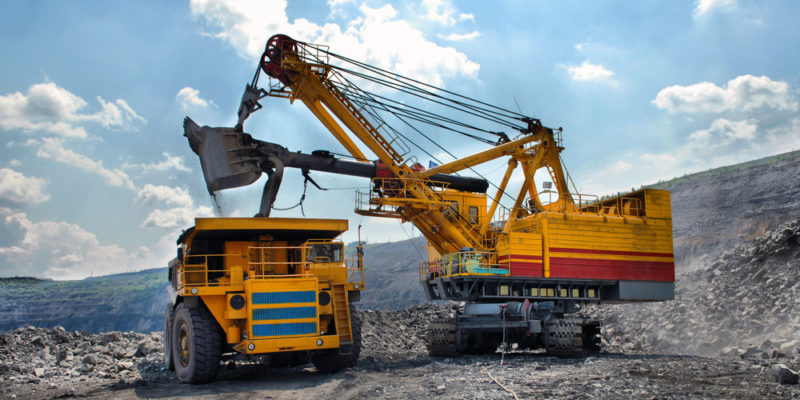We explain what light and heavy industry is, their differences, and provide examples. In addition, we discuss their impact on the environment.

What is light and heavy industry?
Industry is a very broad activity that ranges from the transformation of natural resources (raw materials) into semi-finished products, to the manufacture of semi-finished products into finished goods.
Industry is divided into two types, according to the production process involved and the type of product manufactured:
- Heavy industry. It is the base industry as it starts the productive process and is encompassed within the primary sector of a country’s economy. It is concerned with the exploitation or extraction of raw materials and their manufacture or transformation into semi-finished products that are later used as capital assets for the light industry. Some capital assets include: artificial fibers, fertilizers and chemicals, petroleum gas, steel beams, and cement.
- Light industry. It is concerned with the manufacture or transformation of raw materials and semi-finished products into consumer goods. Some consumer products include: food, clothing, hygiene products, books, and footwear.
- See also: Manufacturing industry
Differences between light and heavy industry
| Light industry | Heavy industry |
|---|---|
| Is encompassed within the secondary sector of a country's economy. | Is encompassed within the primary sector of a country's economy. |
| Makes products from semi-processed raw materials. | Extracts and processes natural resources to be used in the other sectors of the economy. |
| Produces consumer goods. | Makes products used to manufacture other goods. |
| Produces consumer goods of general high value per weight unit. | Produces semi-finished goods sold in large quantities: their value per weight unit is lower but they are sold in large quantities at a high value. |
| The production system requires less consumption of resources (such as electricity and water). | Their production system requires high consumption of resources. |
| The level of waste and impact on the environment is usually low. | The level of waste and impact on the environment is usually high. |
| It is usually established near urban centers. | It is usually established far from cities to be closer to the source of natural resources and due to the high pollution it generates. |
| It usually endures certain drastic measures, such as lack of imported inputs during economic crises. | It cannot replace imports with local inputs. |
Examples of light and heavy industry
Among the main examples of light industries are:
- Manufacture of textiles
- Printing and publishing
- Manufacture of bakery products
- Manufacture of paper
- Manufacture of toys
- Manufacture of wooden furniture
- Manufacture of technology inputs
- Manufacture of shoes
- Manufacture of cleaning products
- Manufacture of household appliances
Among the main examples of heavy industries are:
- Metallurgical industry
- Automotive industry
- Agricultural industry
- Chemical industry
- Mining industry
- Food industry
- Oil industry
- Advanced technology industry
- Telecommunications industry
- Construction industry
Impact of industries on the environment

Industries, both light and heavy, exist to satisfy needs and provide employment. However, it is often the case that during and after the production process, industries impact negatively on the environment.
The negative environmental impact as a result of industrial activity is three-fold:
- Overexploitation of natural resources. Large-scale production requires large amounts of natural resources to support an ever-increasing and accelerated consumption system. Overproduction of goods that cannot be sold is dumped. The production system has become such an immense mechanism that it is cheaper to dump goods than to recycle them or produce in less quantities. What is “more economical” for the industry ends up having high costs for all humanity and the planet. The waste generated by industrial waste has created a serious problem worldwide: it pollutes oceans, earth and air. States must regulate production to preserve resources and biodiversity.
- Labor exploitation. In order to obtain maximum production at the lowest cost, large-scale production often leads to the exploitation of labor. What is profitable for industry involves high costs for workers who are exploited. States must uphold and enforce laws so that workers' rights are respected.
- Pollution. Due to the speed and immediacy to cover a multiplicity of needs, the production system is unable to process both the waste it generates and the products that are not used after being launched on the market. Further, the planet cannot process so many pollutants generated all at once.
It is important to understand that industries themselves do not represent harmful activities. Many companies conduct their activities in a sustainable way.
There are industrial activities that can improve their processes and inputs to achieve sustainability. Minimizing their negative impact on the environment, contributing to the health and well-being of human beings and preserving natural resources and biodiversity are just a few initiatives to bring about a change in the current production system.
Importance of sustainable industries
The concept of sustainability refers to a business activity that can be carried out over time, because it maintains a balance between:
- Profit-making. Sustainable business activity contributes to a better world while making profits.
- Responsible use of resources. Sustainable business activity does not overexploit and makes appropriate use of resources.
- Controlling the impact on the environment. Sustainable business activity treats polluting emissions and waste so that they do not harm the environment.
- Respecting human rights. Sustainable business activity promotes and contributes to improving the quality of life of people.
Proposals for industries in the future
At present, countries and organizations around the world are putting forward proposals and political strategies to be implemented urgently in industrial production processes in order to stop the damage caused to the planet.
Among the most pressing issues are gas emissions, resources extraction, waste utilization, and the modernization of industries to make processes environmentally friendly and promote a circular economy.
- For example: In 2020, the European Union (EU) established a new circular action plan to be adopted by 2030. It consists of modernizing the EU’s economy, introducing sustainable production policies, and prioritizing the reduction and reuse of materials. Minimum requirements will be established for production to avoid negative impact on the environment. In addition, consumer products employing false and misleading marketing strategies to appear sustainable will be fined.
References
- Pastrana, A. (2020). Tipos de industria (video). YouTube.
- Naciones Unidas (2016). Objetivos de desarrollo sostenible: 9 industria, innovación e infraestructuras: ¿por qué es importante?. UN.
- European Commission (2019), Sustainable industry: the European green deal. Commission.
Related articles:
Was this information useful to you?
Yes NoThank you for visiting us :)